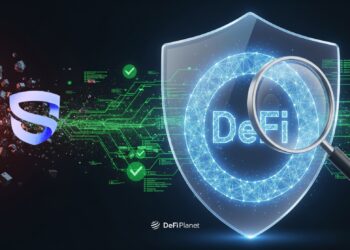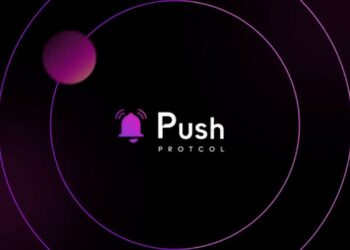AI is transforming various industries, from medicine to finance, but training these powerful models is becoming a privilege only the biggest players can afford. Traditional cloud providers like AWS, Google Cloud, and Microsoft Azure dominate the space, offering the infrastructure needed to run advanced AI computations, but at high financial and centralization costs.
DeepBrain Chain was launched to create a more accessible and decentralized alternative, using blockchain to connect global GPU resources and cut down the costs of training AI models. By tapping into distributed computing power, the platform empowers developers and startups to build and train AI without relying on a few tech giants.
This review dives into how DeepBrain Chain works, what makes it unique in the intersection of AI and blockchain, and whether it can truly unlock affordable, decentralized AI for the future.
What Is DeepBrain Chain and How Does It Work?
DeepBrain Chain (DBC) is a blockchain-powered platform designed to make AI development cheaper and more accessible by decentralizing access to computing power. Instead of relying on expensive cloud services like AWS or Google Cloud, DeepBrain Chain connects unused GPUs from around the world and makes them available to developers and companies that need them to train or run AI models.
How DeepBrain Chain Works
The platform uses blockchain to securely and efficiently match these computing resources with users. Anyone with spare GPU power can contribute to the network and earn DBC tokens as rewards. Developers, in turn, use DBC tokens to pay for the resources they need, creating a cost-effective and scalable alternative to traditional solutions.
The DBC token also plays a key role in the platform’s governance. Token holders can vote on upgrades and changes to the network, ensuring the system evolves in response to the community’s input. By combining blockchain incentives with real-world GPU infrastructure, DeepBrain Chain provides a novel approach to meet the increasing demand for artificial intelligence.
The network’s structure comprises a main chain, relay nodes, and multiple work chains, also known as side chains. The main chain handles all transactions, while relay nodes connect it to the work chains, which manage specific business applications.
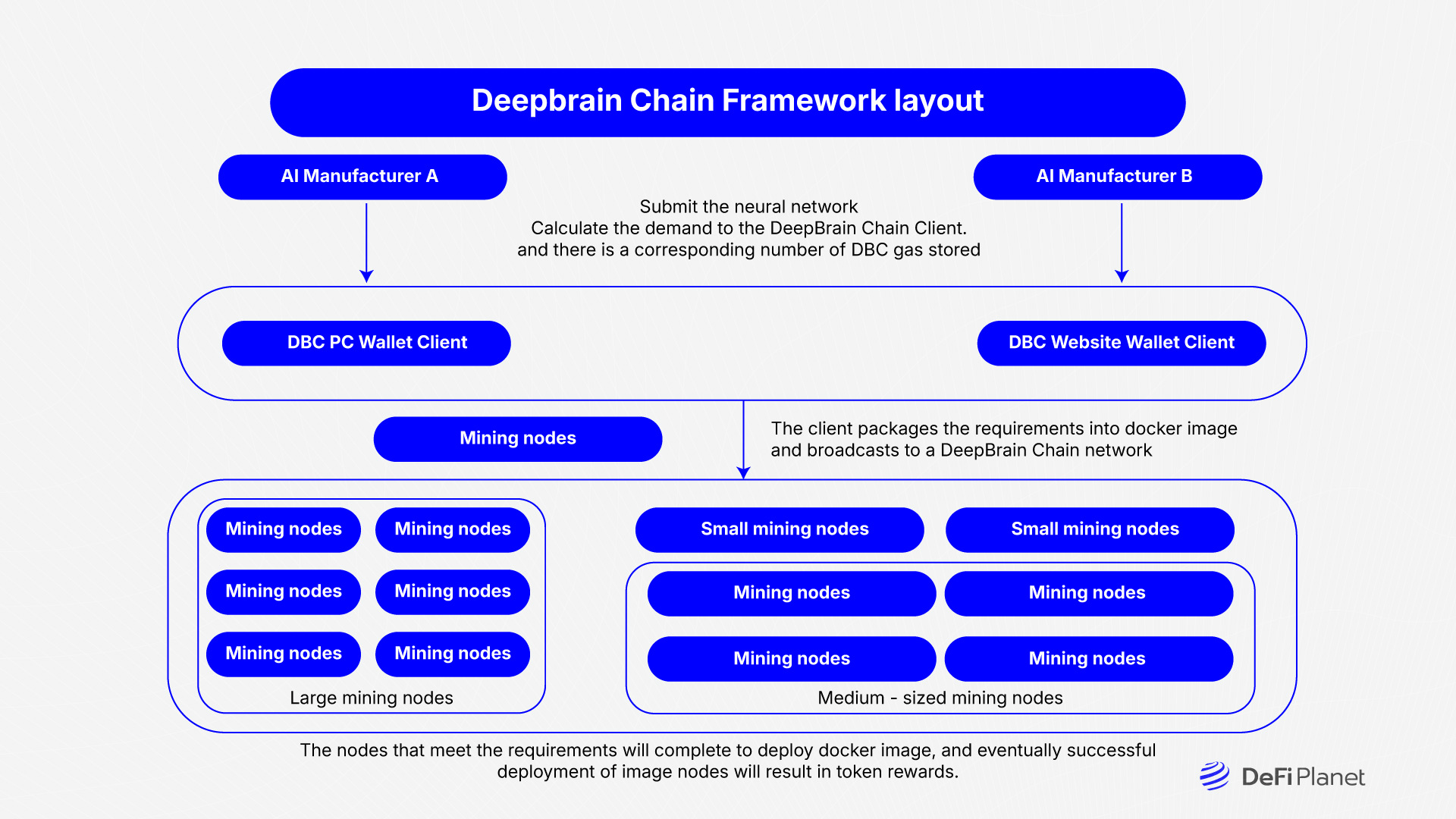
This architecture allows for efficient data sharing and interaction among different parts of the network.
To ensure trust and data protection, DeepBrain Chain implements several security measures. Data providers and AI developers are physically separated, and smart contracts govern their interactions, reducing the risk of data breaches. The platform also supports privacy-preserving techniques, allowing data to be used for training without exposing sensitive information.
Comparing DeepBrain Chain with Google Cloud AI / Microsoft Azure AI
Here’s a clear side-by-side comparison of DeepBrain Chain compared with Google Cloud AI and Microsoft Azure AI:
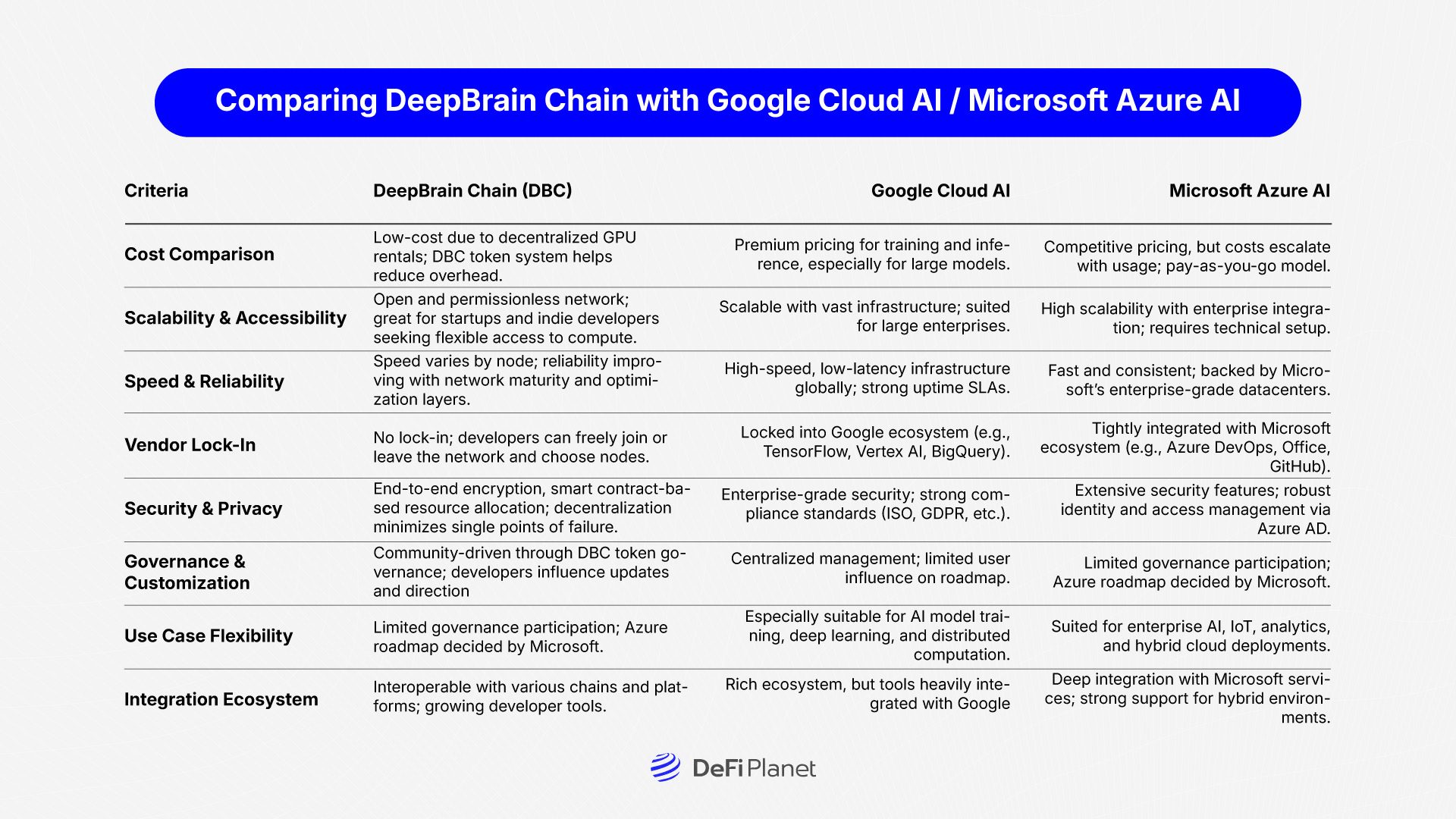
Potential Advantages of DeepBrain Chain’s Model
DeepBrain Chain offers several key benefits that distinguish it from traditional AI computing platforms, enabling more accessible, cost-effective, and decentralized AI development.
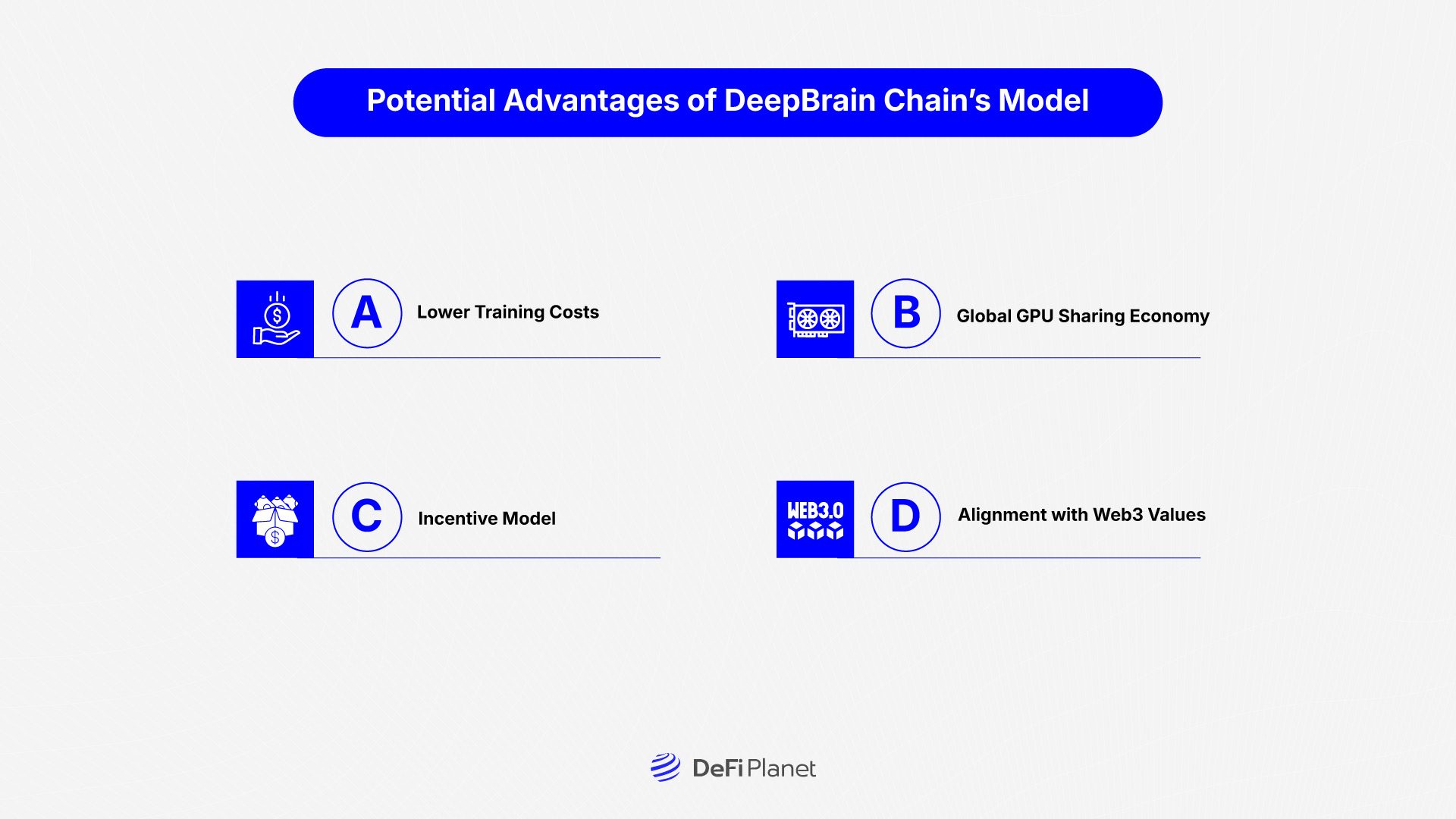
Lower Training Costs
DeepBrain Chain offers a significantly more affordable way for AI developers to access computational power.
By decentralizing GPU resources and connecting developers with underused computing power globally, the platform eliminates the high costs typically associated with centralized cloud services like Google Cloud or Microsoft Azure.
This lowers the financial barriers for AI startups, individual developers, and researchers, making AI development more accessible to a wider audience.
Global GPU Sharing Economy
DeepBrain Chain leverages a global network of GPU providers, creating a “sharing economy” for computational resources. Anyone with spare GPU capacity can join the network and contribute their unused processing power.
In return, these contributors are rewarded with DBC tokens. This decentralized approach maximises resource utilisation and helps monetise otherwise idle GPUs, creating an efficient and scalable marketplace for AI computation.
Incentive Model
The platform incentivises participation through its unique reward system. Users earn DBC tokens for providing computational power, and AI developers pay for resources using these tokens. Additionally, the platform incorporates governance features that allow token holders to vote on network upgrades and changes.
This creates a self-sustaining ecosystem where all participants—GPU providers, developers, and token holders —have a vested interest in the network’s growth and success.
Alignment with Web3 Values
DeepBrain Chain’s decentralized structure aligns with key Web3 principles such as ownership, transparency, and open infrastructure. By operating on blockchain, it ensures that developers and contributors retain control over their data and resources, without being dependent on centralized cloud providers.
This transparency and decentralization foster greater trust in the system, while the open nature of the infrastructure encourages innovation and collaboration across the AI and blockchain ecosystems.
Challenges and Risks
While DeepBrain Chain offers promising benefits, it also faces several challenges and risks that need to be addressed for long-term success in the competitive AI space.
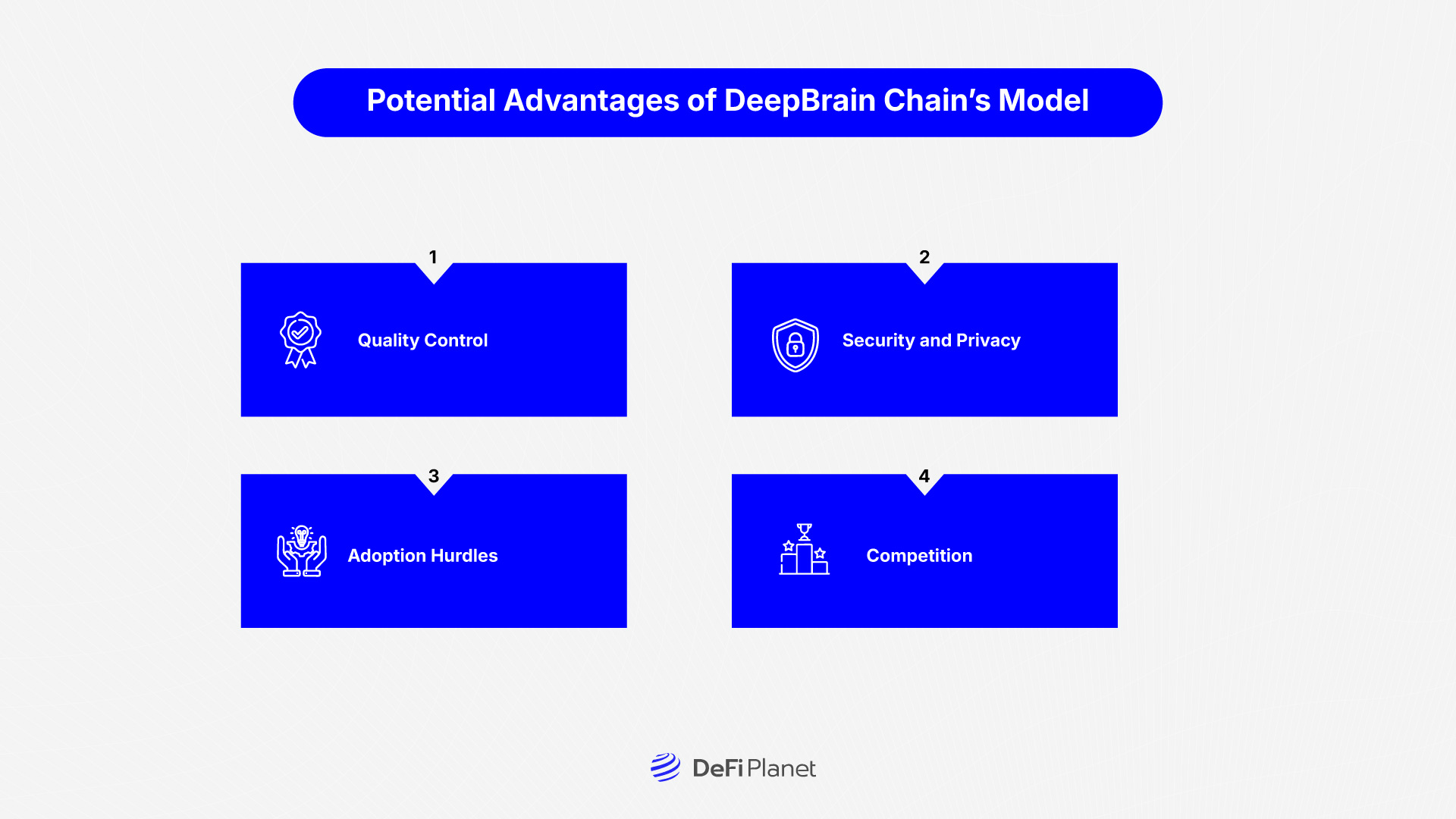
Quality Control
One of the major challenges for DeepBrain Chain is ensuring consistent quality across its decentralized network.
With nodes operated by individuals and entities around the world, there can be significant variability in the quality of hardware, uptime, and reliability of these nodes.
This could lead to performance issues or downtime that might affect the training process for AI models, creating potential inefficiencies for developers relying on stable computing power.
Security and Privacy
Sharing sensitive AI training data on a decentralized network introduces potential security and privacy risks. Since the network relies on multiple participants running nodes, ensuring that data remains secure and that models are protected from tampering is crucial.
Sensitive information may be vulnerable to unauthorized access if proper encryption and privacy mechanisms aren’t fully implemented, raising concerns for developers handling confidential or proprietary data.
Adoption Hurdles
DeepBrain Chain faces the challenge of convincing developers to adopt its platform instead of sticking with trusted, well-established cloud providers like Google Cloud and Microsoft Azure. Many developers are accustomed to the reliability, customer service, and ease of integration offered by traditional cloud services.
The transition to a decentralized model requires overcoming skepticism about performance and trust, as well as educating developers on how to effectively use the platform.
Competition
The decentralized AI space is becoming increasingly competitive, with other platforms emerging to challenge DeepBrain Chain’s approach. Additionally, traditional cloud giants are investing heavily in AI infrastructure, which poses a significant threat.
These companies have extensive resources and established market dominance, allowing them to offer AI solutions that are highly optimized, secure, and scalable. DeepBrain Chain will need to differentiate itself by offering unique advantages that cloud services cannot match, such as cost savings and decentralization.
What This Means for the Future of AI
DeepBrain Chain could change the way AI is developed by making it cheaper, more accessible, and allowing for more collaboration on a global scale.
With DeepBrain Chain, AI developers from around the world can work together. By sharing computing resources and data, the network allows for more diverse collaboration, resulting in smarter AI models. This means different perspectives, new ideas, and innovations can come together, creating better and more adaptable AI technology. Additionally, because it’s cheaper, more people can get involved in AI development.
DeepBrain Chain’s decentralized approach is perfect for emerging trends in AI. It could help power “AI-on-the-edge,” where data is processed locally on devices instead of in centralized data centers. This is important for things like smart devices and autonomous cars. It also supports open-source AI, allowing developers to create and share models without relying on big companies.
And, because the platform is decentralized, it could make AI development more secure, keeping sensitive data safe while still improving machine learning models.
Can DeepBrain Chain Be an AI Game-Changer or Just a Niche Solution?
DeepBrain Chain has the potential to shake up the AI industry by offering a decentralized, cost-effective alternative to traditional cloud solutions. By utilising underutilised GPU resources worldwide, AI development could become more affordable and accessible to smaller startups and independent developers. However, challenges like ensuring the reliability and security of decentralized nodes and getting developers to switch from trusted cloud providers still need to be overcome.
With AI and decentralization both growing rapidly, DeepBrain Chain is positioned at the crossroads of these two trends. If it can overcome its hurdles, it could help drive the future of AI, supporting new innovations like edge computing and privacy-focused machine learning. While it’s uncertain whether DeepBrain Chain will become a major player or stay a niche solution, its unique approach puts it at the forefront of potential change in the AI space.
Disclaimer: This article is intended solely for informational purposes and should not be considered trading or investment advice. Nothing herein should be construed as financial, legal, or tax advice. Trading or investing in cryptocurrencies carries a considerable risk of financial loss. Always conduct due diligence.
If you would like to read more articles like this, visit DeFi Planet and follow us on Twitter, LinkedIn, Facebook, Instagram, and CoinMarketCap Community.
Take control of your crypto portfolio with MARKETS PRO, DeFi Planet’s suite of analytics tools.”

